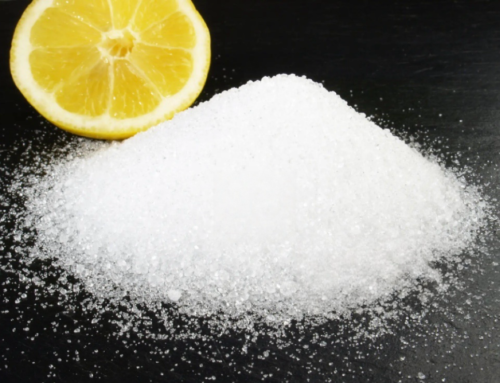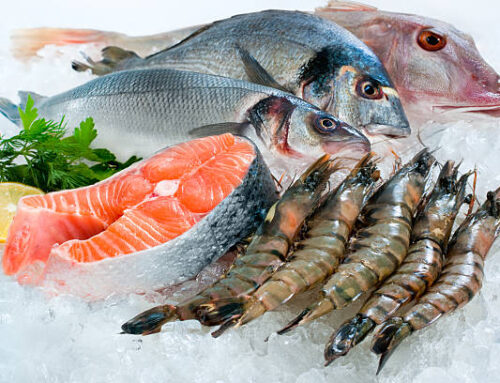 Shrimp is a beloved seafood delicacy enjoyed by people around the world. To maintain its quality, freshness, and appeal, the use of certain additives in shrimp processing is essential. One such additive is sodium tripolyphosphate (STPP), which offers unique properties that make it particularly suitable for enhancing shrimp. In this blog, we will explore the functions, applications, safety considerations, and reasons why sodium tripolyphosphate is an excellent choice for shrimp.
Shrimp is a beloved seafood delicacy enjoyed by people around the world. To maintain its quality, freshness, and appeal, the use of certain additives in shrimp processing is essential. One such additive is sodium tripolyphosphate (STPP), which offers unique properties that make it particularly suitable for enhancing shrimp. In this blog, we will explore the functions, applications, safety considerations, and reasons why sodium tripolyphosphate is an excellent choice for shrimp.
We will proceed with the order of the question below:
- What’s Sodium Tripolyphosphate?
- Why Add Sodium Tripolyphosphate in Shrimp?
- Is Sodium Tripolyphosphate Safe in Shrimp?
- Can Sodium Tripolyphosphate be used in other seafood?
Now let’s get started with the first question.
What’s Sodium Tripolyphosphate?
Sodium tripolyphosphate is a versatile inorganic compound used in various industries, including food processing. It is a white, crystalline powder that dissolves readily in water, making it convenient for different applications. In shrimp processing, sodium tripolyphosphate serves multiple functions and plays a crucial role in preserving the quality and characteristics of shrimp.
| Formula | Na5P3O10 |
| Synonyms | Pentasodium Triphosphate, Pentasodium tripolyphosphate,Sodium tripolyphosphate |
| E-Code | E451(i) |
| CAS No. | 7758-29-4 |
| HS Code | 28353911 |
| Molecular weight | 367.86 g/mol |
| Appearance | White powder or granules |
| Solubility | Soluble in water, insoluble in organic solvents |
| pH level(1% solution) | Between 9-10 |
| Assay | ≦ 95% |
Why Add Sodium Tripolyphosphate in Shrimp?
The addition of sodium tripolyphosphate in shrimp processing offers several advantages that make it a valuable ingredient. Let’s delve into the reasons why sodium tripolyphosphate is added to shrimp and explore its potential use in other seafood.
Moisture Retainer: Shrimp has a delicate texture and tenderness, which can be easily compromised during processing and cooking. Sodium tripolyphosphate helps to address this issue by acting as a moisture retainer. It allows the shrimp to retain its natural moisture content, preventing excessive drying and resulting in juicy and succulent shrimp meat. The enhanced moisture retention contributes to an improved eating experience and helps maintain the overall quality of the shrimp.
Preservative: It acts as a natural preservative, extending the shelf life of shrimp by inhibiting the growth of bacteria and other spoilage microorganisms.
Color Stabilizer: Sodium tripolyphosphate helps preserve the natural color of shrimp, preventing discoloration and maintaining visual appeal.
Texture improver: In addition to moisture retention, sodium tripolyphosphate also enhances the texture of shrimp. It improves the firmness and tenderness of the meat, resulting in a pleasant mouthfeel. This textural enhancement makes shrimp more enjoyable to eat, especially in dishes where shrimp is the star ingredient. However, it is important to note that the impact of sodium tripolyphosphate on texture may vary depending on the specific characteristics of other seafood types.
Is Sodium Tripolyphosphate Safe in Shrimp?
Yes, sodium tripolyphosphate is considered safe for use in shrimp processing. It has undergone a thorough evaluation and has been approved by regulatory authorities, including the U.S. Food and Drug Administration (FDA), for use in food applications. When used within the recommended limits, sodium tripolyphosphate does not pose any significant health risks to consumers.
Can Sodium Tripolyphosphate Be Used in Other Seafood?
When it comes to the use of sodium tripolyphosphate in other seafood, its application depends on factors such as the nature of the seafood, processing requirements, and consumer preferences. Importers, distributors, and wholesalers of phosphates can consider promoting sodium tripolyphosphate as a valuable ingredient for various seafood preparations. By highlighting its benefits in terms of moisture retention and texture enhancement, they can effectively demonstrate how sodium tripolyphosphate can contribute to the overall quality and appeal of different seafood products.
In frozen fish, sodium tripolyphosphate can aid in retaining moisture during the freezing and thawing processes. It helps prevent the formation of ice crystals, which can lead to cellular damage and loss of moisture. By retaining moisture, sodium tripolyphosphate helps preserve the juiciness and succulence of the fish, ensuring that it remains flavorful and enjoyable even after being frozen and thawed.
Similarly, frozen lobster and crab can benefit from the use of sodium tripolyphosphate. These delicacies are highly valued for their sweet and tender meat, and sodium tripolyphosphate can help maintain their desirable qualities during the freezing and subsequent thawing process. By retaining moisture and preventing texture degradation, it helps preserve the natural taste, tenderness, and succulence of frozen lobster and crab.
Sodium tripolyphosphate is a versatile and valuable additive in shrimp processing. Its ability to retain moisture, enhance texture, and improve overall quality makes it an excellent choice for shrimp preparations. Importers, distributors, and wholesalers of phosphates can promote the use of sodium tripolyphosphate to highlight the benefits it brings to shrimp and other seafood products. With its proven safety record, it provides a reliable solution for enhancing the taste, texture, and appeal of shrimp, delighting consumers and driving the success of businesses in the seafood industry.
If you’re looking for a reliable supplier of sodium tripolyphosphate, don’t hesitate to contact us:[email protected].




